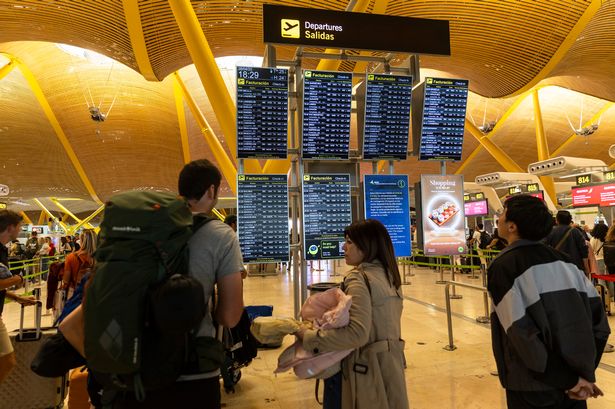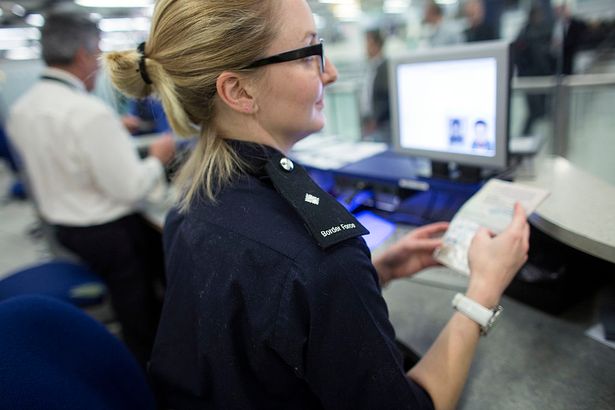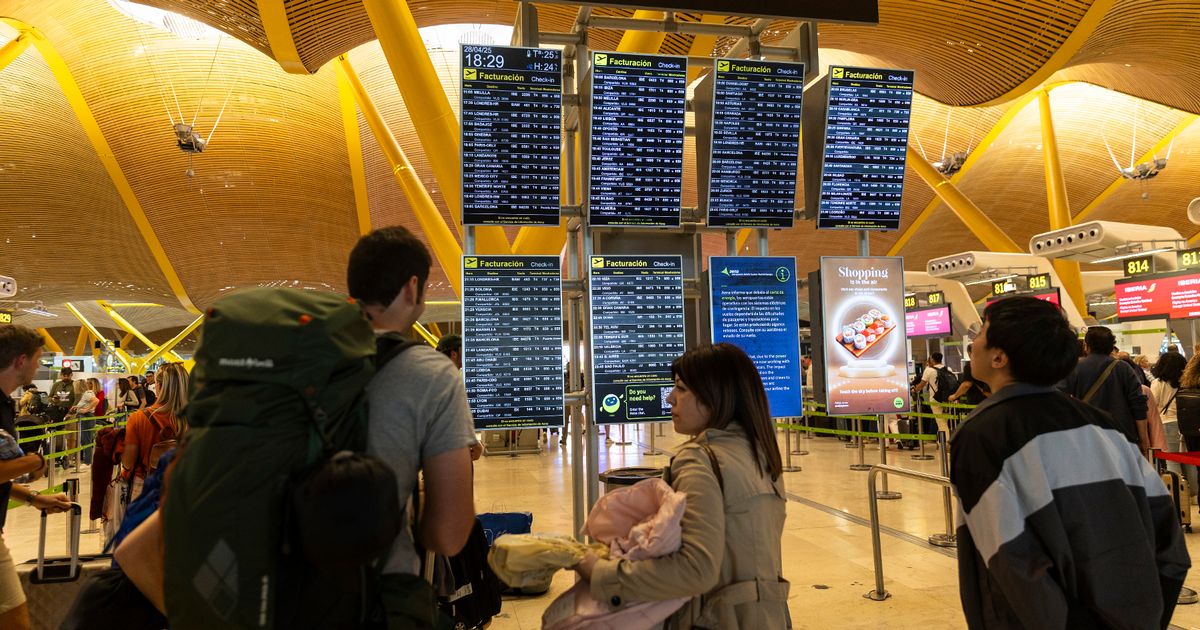New rules come into force from October 12 for 29 EU countries Brits travelling to 29 EU countries will face tougher border checks from October 12 as the EES system is rolled out (Image: Getty Images)
Brits travelling to 29 EU countries will face tougher border checks from October 12 as the EES system is rolled out (Image: Getty Images)
Holidaymakers travelling to Europe next month are warned of long queues at the EU border as new rules come into effect.
From October 12, the European Union is launching the Entry/Exit System (EES), which will require British travellers to have their fingerprints and photo taken when first entering or leaving the Schengen area, which applies to 29 European countries.
The scheme will be rolled out gradually across external borders over a period of six months, so some travellers will notice a change right away while others will not.
During this period, Brits will still have their passports stamped but once the EES is fully implemented it will replace the passport stamping system. Once a digital EES record is created for a traveller, it will be valid for three years.
Never miss a story with the MEN’s daily Catch Up newsletter – get it in your inbox by signing up here
The EES is set to be “fully operational” from April 10 2026, according to the European Union.
In a recent Q+A shared in The Independent, longstanding travel journalist Simon Calder issued advice for those travelling to Europe next month and in the weeks following October 12.
 Brits will face tougher checks at the EU border from October 12(Image: Getty Images)
Brits will face tougher checks at the EU border from October 12(Image: Getty Images)
He warned travellers that the EES system adds an ‘extra hurdle’ when arriving at the EU border. One reader asked: “What does EES mean for Britons queuing at border points?”
Calder replied: “A longer wait than normal. All the current red tape – checking and stamping British passports – will continue. But you will have to pass the registration hurdle too.”
He added that during the EES rollouts, “a human inspection and stamping of UK passports is mandatory up to and including April 9 2026.” So British travellers will face both the EES checks and passport stamping.
Join the Manchester Evening News WhatsApp group HERE
The aim of the EES is to boost border security and ensure people do not overstay the 90-day limit in any 180 period. The scheme applies to non-EU nationals travelling to Europe for a short stay who either possess a short-stay visa, or do not need a visa to stay for a maximum of 90 days in any 180-day period – which include British nationals.
The UK Government said that those entering the Schengen area through the Port of Dover, Eurotunnel at Folkestone or St Pancras International, will be subject to EES checks at the border before leaving the UK. Travellers will also need to provide either their fingerprint or photo when they leave the Schengen area.
Full list of countries implementing the EES scheme:
- Austria
- Belgium
- Bulgaria
- Croatia
- Czech Republic
- Denmark
- Estonia
- Finland
- France
- Germany
- Greece
- Hungary
- Iceland
- Italy
- Latvia
- Liechtenstein
- Lithuania
- Luxembourg
- Malta
- Netherlands
- Norway
- Poland
- Portugal
- Romania
- Slovakia
- Slovenia
- Spain
- Sweden
- Switzerland
The EES is different to the ETIAS visa-waiver which is expected to launch between October and December 2026, which will require Brits to pay a €20 for the visa-waiver, which will be valid for up to three years, or until the passport expires, whichever comes first.
The ETIAS will be required for short-term stays within the Schengen area, lasting up to 90 days within any 180-day period.
Travellers under the age of 18, over the age of 70, or family members of EU citizens and family members of non-EU nationals who have the right to move freely throughout the European Union will be exempt.
For more of today’s top stories, click here.
